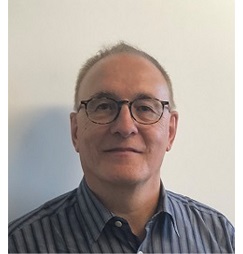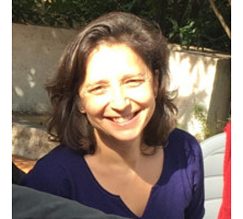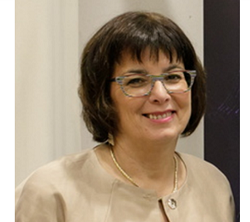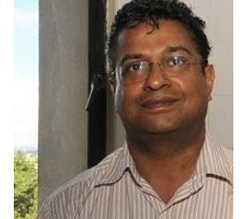
|
|
|
Plenary Speakers
Today Clément Sanchez Emeritus Professor of the Collège de France chair named « Chemistry of Hybrid Materials » and Professor at USIAS (University of Strasbourg Institut of Advanced Studies) chair named Chemistry of ultradivided matter. He was Director of The “Laboratoire de Chimie de la Matière Condensée de Paris” (UMR 7574, University of Pierre and Marie Curie-Collège de France-CNRS) (1999-2013). He did a large part of his carrer at the CNRS where he was Director of Research studying ”chimie Douce” strategies to synthesize hybrid nanomaterials. He was also Professor at l'Ecole Polytechnique during 12 years. He received an engineer degree from l'Ecole Nationale Supérieure de Chimie de Paris in 1978 and a “thèse d'état” (PhD) in physical chemistry from the University of Paris VI in 1981. He did a post-doctoral work at the University of California, Berkeley, and is currently performing research at Paris Sorbonne University, at the University of Strasbourg and at the University of Bordeaux. He is specialised in the field of nanochemistry and physical properties of nanostructured porous and non-porous transition metal oxide-based gels and porous and non-porous hybrid organic inorganic materials shaped as monoliths, microspheres and films. He was the chairman and organizer of numerous international meetings associated to the field of soft-chemistry, hybrid materials and related bio-aspects. He was the recipient of a few national and international awards and is member of several Academies of Sciences (for a more complete CV and more informations about his different awards please see) https://www.college-de-france.fr/site/clement-sanchez/Biographie.htm https://www.usias.fr/chaires/clement-sanchez/ https://scholar.google.fr/citations?user=vM9snnEAAAAJ&hl=fr
Corine GERARDIN, Institute Charles Gerhardt Montpellier (ICGM) Head of the Department of Porous and Hybrid Materials, ICGM Montpellier CNRS-University of Montpellier-ENSCM, Montpellier, FranceCorine Gérardin is a CNRS Research Director at the Charles Gerhardt Institute in Montpellier, France. In 1988, she obtained an engineer degree from the Ecole Nationale Supérieure de Chimie de Paris, and in 1991, she obtained her PhD from the University Pierre et Marie Curie, Paris, on the solid-state NMR study of silicon carbonitride formed from preceramic polymers. She then worked as a post-doctoral fellow at Princeton University (NJ, USA). In 1994, she was appointed to the CNRS in France and spent two years at the University of Strasbourg, France. There, she developed original methods for studying the formation of microporous cristalline aluminophosphate phases by in situ NMR under hydrothermal conditions for multiphase liquid and solid systems. From 1996 to 2000, she was a visiting researcher at Princeton University and at the CNRS-Rhodia joint Laboratory in Cranbury (NJ, USA). In 1997 she was awarded a bronze medal from the CNRS for her work on the in situ hydrothermal NMR study of the formation of microporous materials. In 2001, she joined the Charles Gerhardt Institute in Montpellier. And since 2021, she has been the Head of the Department of Porous and Hybrid Materials of the Institute Charles Gerhardt (40 permanent research faculty, 75 students and post-docs). Her main interest is the synthesis of hybrid nanomaterials controlled by the use of specific hydrosoluble block copolymers. She has developed original strategies for the synthesis of polymer-stabilized colloidal particles of metal hydroxides, oxides, phosphates and sulfides using double-hydrophilic block copolymers. Her cuurent focus is on the preparation and property control of functional mesoporous silica and hierarchically porous aluminosilicates for biomedical, catalytical and energy applications. Her research group is also active in the field of self-assembly processes of stimuli-responsive hydrophilic polymers, in particular polyion complex micelles, which they use to structure and functionalize new ordered functional mesoporous materials. Recently she and her group have developed new strategies to control the morphology (nanoparticles, films, membranes, monoliths) of polymer-functionalized mesoporous materials based on EISA (evaporation induced self-assembly), EASA (electrochemically-assisted self-assembly), and FISA (freezing-induced self-assembly) techniques. She is particularly interested in controlling of the mesophases and curvatures of structures formed by soft matter, notably polyion complex micelles, and focuses on the implementation of soft matter concepts in the field of hybrid nanomaterials. Finally she has been involved in the organization of several international conferences, most recently the 8th International Conference on Multifunctional, Hybrid and Nanomaterials in Montpellier in March 2025.
Sylvie Begin, Institut of Chemistry and Process for Energy, Environment and Health (ICPEES) Sylvie Begin-Colin completed her PhD degree in Material Chemistry at University of Nancy (France) in 1992. She has integrated in 1992 the CNRS as Researcher at the Laboratory of Science and Engineering of Material and of Metallurgy at the Mining Engineering School of Nancy and has developed researchs on physico-chemical modifications induced by ball-milling in oxides. Then, she was appointed Professor in 2003 at the European Engineering School in Chemistry, Materials and Polymers (ECPM) at the University of Strasbourg and was director of ECPM (450 students and 45 Professors/Assistant-Professors) from 2014 to 2021. Her research at ICPEES focuses on the chemical engineering of hybrid nanomaterials for environment and health and she heads the "NAMATHY" team. One great part of her research aims at developing different chemical and mechanochemical synthesis methods and at understanding the synthesis mechanisms of hybrid nanomaterials to control their size, shape and/or composition. Iron oxide-based nano-objects are thus designed to combine imaging and therapeutic modalities in one formulation for health applications. Hybrid perovskites and iron oxide nanostructures are also been combined with carbon nanotubes and graphene to develop new materials for energy and pollution control applications. She has thus contributed to the creation of one start-up for cancer treatment and is consulting for other biomedical start-ups. She has obtained AOARD, ANR, INCA, Labex, MICA, ARC, INTERREG, Alsace contre le Cancer grants and has participated and participates as partner to different European programs ((Euronanomed, Marie Curie…). Her work has been rewarded by the “Jean-Rist” price of the French Society for Metallurgy and Materials, a Scientific Excellence Award and award of “Chevalier dans l'ordre des palmes académiques”. https://scholar.google.com/citations?user=H6pLDg4AAAAJ&hl=fr
Dr Radhakhrishna Somanah (Dinesh) 1. Researcher in Physics with more emphasis in Astrophysics. One of the pioneers of professional astronomy in Mauritius. One of the pioneers of professional radio astronomy in Africa. 2. Academic qualifications: BSc Hons Physics, MSc Theoretical Physics, PhD Physics with specialization in Astrophysics (Assessed by Prof S Rawlings from University of Oxford and Prof M Davis from University of Manchester, UK) 3. Job experience: (i) Lecturer and Researcher in Pyhsics/Astrophysics at the University of Mauritius from November 1988 to February 2016 (nearly 30 years). Director of the Mauritius Radio Telescope for nearly 12 years during the same period. Retired as Associate-Professor at UoM in October 2020. (ii) Director General of the University of Mascareignes, from March 2016 till date. (iii) Worked as a researcher in India, South Africa and Australia at different times during the period 1988 to 2016. 4. Main international awards:
5. Main international activity: (i) Representative of Mauritius in the Agence Universitaire de la Francophonie (AUF) in the Indian Ocean Region, which is an international organization which groups more than 800 universities in more than 100 countries (www.auf.org ). 6. Research contribution: Author of some 100 research papers in international scientific journals and conferences and two patents. 7. Other research interests besides Astrophysics: Renewable Energy Resources. Factors affecting climate changes. Big Data, Machine Learning and Deep Learning. 8. Other skills: (i) Managerial experience as the Head of Department of Physics, Director of the Mauritius Radio Telescope and Director General of the Universite des Mascareignes. Plenary Lecture on tuesday 9th July : The talk will highlight the birth and evolution of Radio Astronomy in Africa, from the first Radio Telescope (single dish) in South Africa, through the Mauritius Radio Telescope (MRT) to the present Square Kilometer Array (SKA) Radio Telescope. The following topics will be briefly highlighted: scientific importance of Radio Astronomy in unveiling the mysteries of the Universe, technical specifications of the Radio Telescopes built in Africa and their scientific achievements .... |





